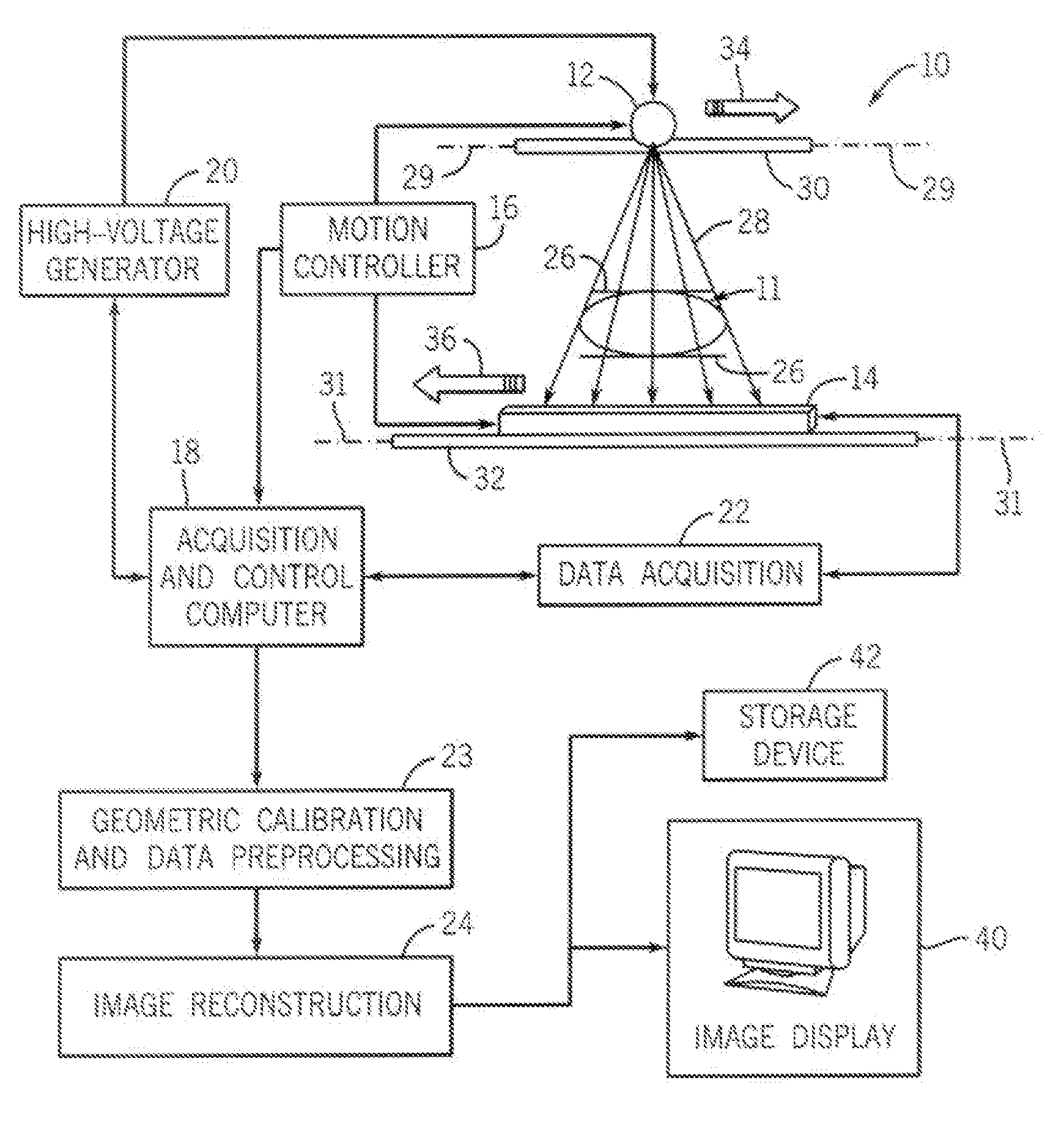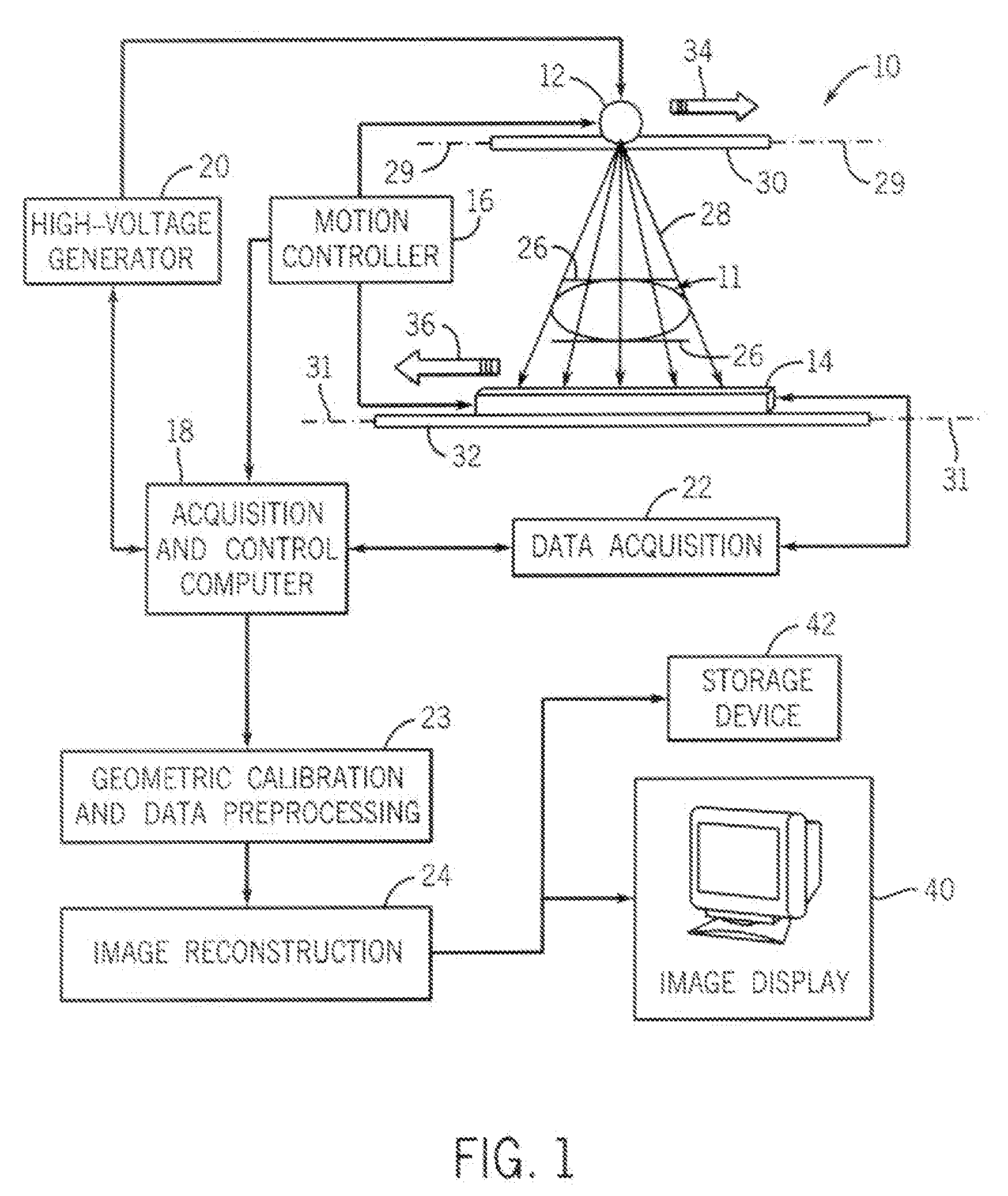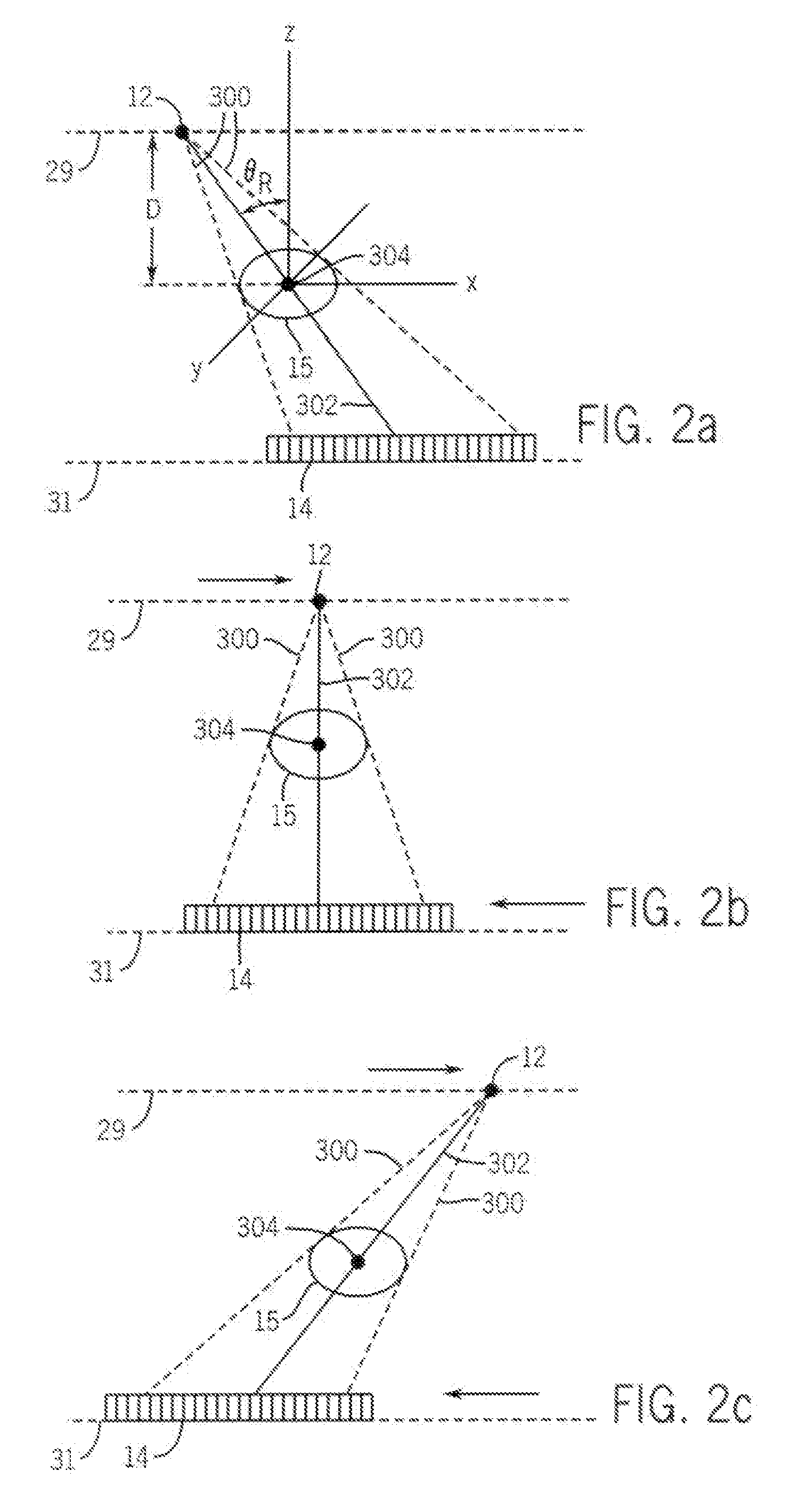Ultra Low Radiation Dose X-Ray CT Scanner
a ct scanner and ultra-low radiation technology, applied in tomography, instruments, nuclear engineering, etc., can solve the problems of difficult perception and characterization of small lesions, unable to detect low contrast, and 30 percent of breast cancers missed in conventional x-ray screening mammography, etc., to achieve excellent low contrast detectability and high spatial resolution in planes
- Summary
- Abstract
- Description
- Claims
- Application Information
AI Technical Summary
Benefits of technology
Problems solved by technology
Method used
Image
Examples
Embodiment Construction
[0020]FIG. 1 is a schematic illustration of the line scan cone beam CT imaging system 10 for generating an image of an object 11 such as a breast. CT imaging system 10 includes an x-ray source 12, a detector array 14, and a motion controller 16 to control the motion of the x-ray source 12 and the detector array 14, with the motion controller 16 under the direction of an acquisition and control computer 18. the acquisition and control computer 18 also controls a high voltage generator 20 for activating the x-ray source 12 as desired and further controls a data acquisition module 22. A geometric calibration and data preprocessing module 23 and an image reconstruction module 24 are also included to provide processing capabilities for the CT imaging system 10.
[0021]When used to image breasts, system 10 can be constructed as a table top system so that during an imaging procedure, similar to conventional x-ray mammography, a patient is standing and the breast is held by two plastic plates...
PUM
 Login to View More
Login to View More Abstract
Description
Claims
Application Information
 Login to View More
Login to View More - R&D
- Intellectual Property
- Life Sciences
- Materials
- Tech Scout
- Unparalleled Data Quality
- Higher Quality Content
- 60% Fewer Hallucinations
Browse by: Latest US Patents, China's latest patents, Technical Efficacy Thesaurus, Application Domain, Technology Topic, Popular Technical Reports.
© 2025 PatSnap. All rights reserved.Legal|Privacy policy|Modern Slavery Act Transparency Statement|Sitemap|About US| Contact US: help@patsnap.com



